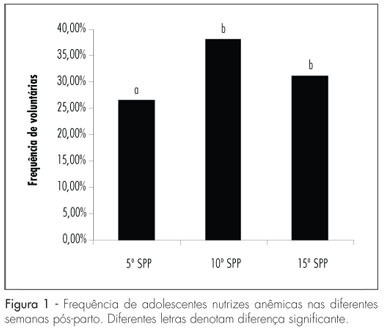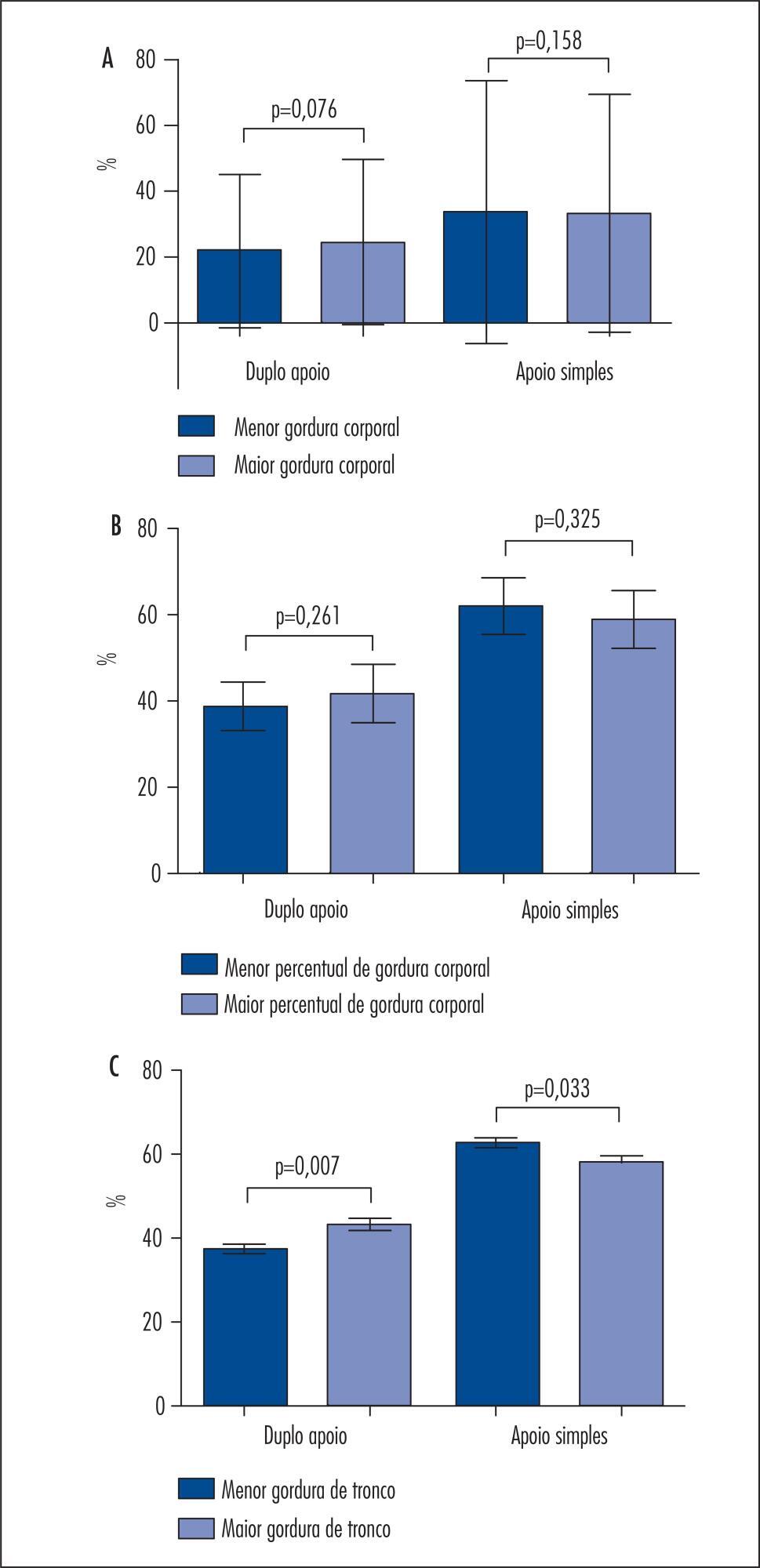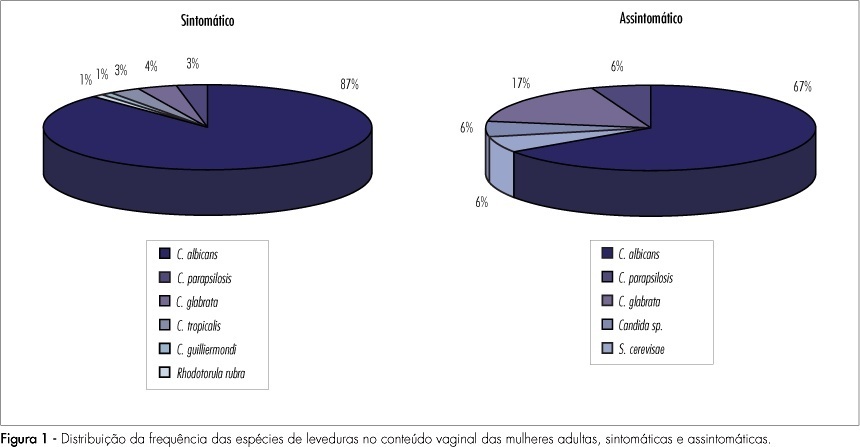Summary
Revista Brasileira de Ginecologia e Obstetrícia. 2004;26(3):175-175
Summary
Revista Brasileira de Ginecologia e Obstetrícia. 2010;32(4):176-183
DOI 10.1590/S0100-72032010000400005
PURPOSE: to estimate the prevalence infection of human immunodeficiency virus (HIV), human T-cell lymphotropic vírus (HTLV), hepatitis B virus (HBV), Chlamydia trachomatis (C. trachomatis) and syphilis in pregnant women, as well as risk factors associated with these infections, in Fundação de Medicina Tropical do Amazonas (FMTAM). METHODS: a cross-sectional study was carried including 674 pregnant women consecutively attended of the spontaneous demand of FMTAM between March and September 2008. Demographic, epidemiologic, socioeconomic, clinical and obstetric information have been collected through specific questionnaires. Patients had blood sample collected by peripheral venous for accomplishment of serological tests of HIV, HTLV, HBV and syphilis. Cervical secretion sample has been collected for C. trachomatis antigens detection test. The Odds Ratio has been used to evaluate risk factors associated to infections. Statistical analysis has been done with the t-Student, χ2 and Fisher's exact tests. RESULTS: the average age was 23.9 years old (SD 6.3). The observed prevalence was 0.6% to infection by HIV; 0.7% by HBsAg; 1.0% of syphilis and 2.7% by C. trachomatis. All the samples went negatives to HTLV. There were no variables associated with infection by HIV, HBV and syphilis. Significative statistically association was observed between pregnant woman with age under 20 years and of first pregnancy with C. trachomatis infection. CONCLUSIONS: the study evidenced that the prevalence infection by HIV in pregnant women assisted in FMTAM is similar to the values described in the Brazilian literature, while the prevalence by HTLV, HBV, syphilis and C. trachomatis in the studied population are below found by other authors. The main risk factor for the infection by C. trachomatis was being under 20 years old.
Summary
Revista Brasileira de Ginecologia e Obstetrícia. 2011;33(4):176-181
DOI 10.1590/S0100-72032011000400005
PURPOSE: to evaluate changes in the nutritional status of lactating adolescents in different postpartum weeks. METHOD: this is an analytical, observational, longitudinal study. Lactating adolescents were followed-up from the 5th to the 15th postpartum week (PPW). The nutritional status was evaluated in the 5th, 10th and 15th PPW by the Body Mass Index (BMI/age). A colorimetric method was used to determine hemoglobin level and microcentrifugation to define hematocrit. ANOVA with repeated measures was used to compare means, followed by the Tukey post-test. The level of significance was 5%. RESULTS: modification in nutritional status was observed from the pregestational period to the 15th PPW, with a reduction in the frequency of lactating adolescents with low weight (from 21% to 9%) and a rise in the frequency of overweight (21% to 27%) and eutrophic (58% to 64%) adolescents. Although mean hemoglobin (12.3±1.7 g/dL) and hematocrit (39.0±4.0%) levels were normal, a high frequency of anemia (30%) was observed throughout the study period. CONCLUSION: the present results show that the body weight of lactating adolescents rises during the lactation period and could lead to a higher frequency of obesity among adolescents. Anemia is still a nutritional problem, not only during pregnancy, but also during the postpartum period. It is necessary to prevent and treat probable subclinical nutritional deficiencies at this biological time.

Summary
Revista Brasileira de Ginecologia e Obstetrícia. 2014;36(4):176-181
DOI 10.1590/S0100-7203201400040003
To determine the relationship between total body and trunk fat mass and gait performance in postmenopausal women.
Thirty-nine postmenopausal women aged 50 years or more were studied. The following items were determined: weight and height to calculate body mass index (BMI), body composition using the technique of Dual-Energy X-ray Absorptiometry (DXA), and gait using baropodometry. The body composition variables used were total body fat, percent body fat and trunk fat, while the gait variables were percent double stance time and single stance time and gait speed. The women were divided into two groups according to the median for each body composition variable: less and more body fat, less and more percent body fat and less and more trunk fat. To compare the gait variables between groups, we used the Mann-Whitney test. To evaluate the possible relationships between body composition variables and gait variables, we used the Spearman correlation test. All analyses were performed with the level of significance set at 5%.
The group with more trunk fat showed longer double stance time (p=0.007) and lower values of single stance time (0.033) than the group with less trunk fat. We found significant and positive correlations between trunk fat and double stance time (R=0.40) and negative correlations between trunk fat and single stance time (R=-0.32).
Postmenopausal women with a greater amount of trunk fat tended to have impaired gait performance.

Summary
Revista Brasileira de Ginecologia e Obstetrícia. 1999;21(3):176-177
Summary
Revista Brasileira de Ginecologia e Obstetrícia. 2019;41(3):176-182
The aim of the present study was to describe and analyze data of 57 women with borderline ovarian tumors (BOTs) regarding histological characteristics, clinical features and treatment management at the Department of Obstetrics and Gynecology of the Universidade Estadual de Campinas (Unicamp, in the Portuguese acronym).
The present retrospective study analyzed data obtained from clinical and histopathological reports of women with BOTs treated in a single cancer center between 2010 and 2018.
A total of 57 women were included, with a mean age of 48.42 years old (15.43- 80.77), of which 30 (52.63%) were postmenopausal, and 18 (31.58%) were < 40 years old. All of the women underwent surgery. A total of 37 women (64.91%) were submitted to complete surgical staging for BOT, and none (0/57) were submitted to pelvic or paraortic lymphadenectomy. Chemotherapy was administered for two patients who recurred. The final histological diagnoses were: serous in 20 (35.09%) cases, mucinous in 26 (45.61%), seromucinous in 10 (17.54%), and endometrioid in 1 (1.75%) case. Intraoperative analyses of frozen sections were obtained in 42 (73.68%) women, of which 28 (66.67%) matched with the final diagnosis. The mean follow-up was of 42.79 months (range: 2.03-104.87 months). Regard ingthe current status of the women, 45(78.95%) are alive without disease, 2(3.51%) arealive with disease, 9 (15.79%) had their last follow-up visit > 1 year beforethe performanceof the present study but arealive, and 1 patient(1.75%) died of another cause.
Women in the present study were treated according to the current guidelines and only two patients recurred.
Summary
Revista Brasileira de Ginecologia e Obstetrícia. 2009;31(4):177-181
DOI 10.1590/S0100-72032009000400004
PURPOSE: to characterize, phenotypically, yeasts isolated from the vaginal content of 223 symptomatic (S) and asymptomatic (A) adult women with vulvovaginitis, and to determine the clinical indicators which may lead to the appearance of signs and symptoms related to the mucosa involvement by this pathology. METHODS: a questionnaire with open and closed questions on epidemiological clinical data was applied initially. Then, mycological diagnosis with sowing in Chrom Agar Candida was done, followed by micro-morphological and biochemical identification. Specific methods for the detection of the virulence factors, proteinase and phospholipase were employed. Statistical analysis was performed through χ2 and Pearson's χ2 tests. RESULTS: the most prevalent species found was Candida albicans (87%, S and 67%, A) followed by Candida glabrata (4%, S e 17% A). The number of women reporting the use of contraceptives was higher among the symptomatic, 77%. In the two groups studied, about 87% of the women presented regular menstrual cycles and 57% were married with ages between 30 to 40 years old. Concerning the sexual practices, there has been concomitance among anal, oral and vaginal habits from the patients. Only Candida albicans produced the virulence factor phospholipase in 37.5% of them. Proteinase has been detected in Candida albicans, Candida glabrata and Candida parapsilosis. This latter virulence factor was mainly associated to isolates from symptomatic patients. CONCLUSIONS: it is a fact that the vaginal mucosa can be colonized and infected by yeasts, with several Candida species present. Nevertheless, Candida albicans is the most prevalent in the vaginal mucosa of adult women. It is evident the emergence of non-albicans Candida species, some of them with intrinsic resistance to azolics, such as Candida glabrata, Candida parapsilosis, Candida tropicalis, and Candida guillermondii, which can be explained by the inadequate use of medicines and empirical treatment.

Summary
Revista Brasileira de Ginecologia e Obstetrícia. 2004;26(3):177-184
DOI 10.1590/S0100-72032004000300002
PURPOSE: to assess the use of antenatal corticosteroid (AC) by mothers and its repercussion on the birth conditions of preterm babies at the eight university neonatal units belonging to the Brazilian Network of Neonatal Research. METHODS: an observational prospective cohort study. All 463 pregnant women with a gestational age (GA) of 23 to 34 weeks and their 514 newborn babies were evaluated during the period from August 1 to December 31, 2001. The data were obtained by maternal interview, by the analysis of the medical records and by the follow-up of the newborn infants, and analyzed statistically using chi2, Mann-Whitney and ANOVA tests and multiple logistic regression, with the level of significance set at 0.05. RESULTS: 60.1% (282/463) of the pregnant women (a variation from 12.5 to 87.3% among units) received at least one AC dose. The AC use was directly associated with the number of prenatal visits, with maternal hypertension and with the antenatal use of tocolytic agents. Babies from treated pregnant women presented higher birth weight (1,379±421 vs 1,244±543 g), longer gestational age (30.9±2.0 vs 29.5±3.5 weeks), better Apgar scores at the 1st and 5th minute, and a reduced need for intervention in the delivery room. The use of AC, the GA and a baby small for GA independently improved the birth conditions. CONCLUSIONS: at most centers, AC was administered at frequencies below the desired ones, and in 50% of cases in an inadequate manner. Treatment was applied more to mothers who received appropriate prenatal care and was associated with better birth conditions.